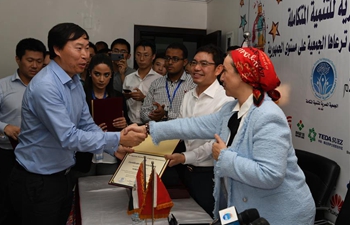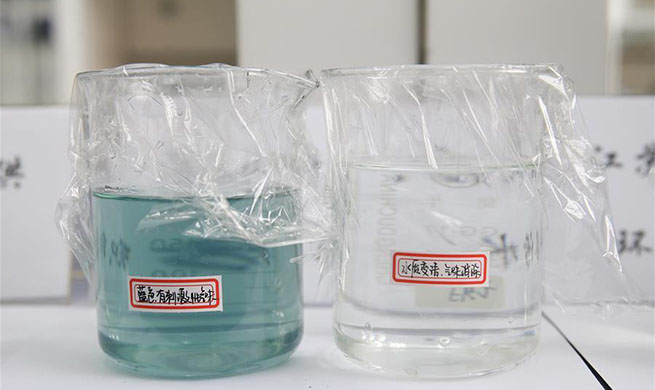by Peter Mertz
SALT LAKE CITY, the United States, May 27 (Xinhua) -- "It defiantly helped with confidence and maturity," Dawn Frandsen told Xinhua of her sons, who are now 9th graders and taking Chinese college-level classes.
Frandsen's twins were in the second grade in 2008 when funding was approved for Wasatch Elementary School in Provo, Utah to have students spend a half-day speaking Chinese, studying math and science, and the other half-day being taught reading, writing, and history in American style.
Frandsen had her sons repeat the first grade so they could start at the beginning of the new Chinese immersion effort. She considers it one of the best decisions of her life.
"They know for a fact that they can do hard things. They are less daunted by other difficult tasks," she said with pride.
"They are not afraid to communicate with adults and have been in several situations where they have been able to translate for adults and been very impressive and comfortable to do so," she added.
WESTERN PIONEERS
The large, western state of Utah is known for many things - spectacular national parks, enormous mineral resources, and a burgeoning IT sector.
However, few would recognize that Utah, America's 11th biggest state and home to only 3 million people, is a leader in education - specifically bilingual learning.
Senator Howard Stephenson, 67, has led Utah's legislative efforts to bring bilingual education to his constituency during his 35 years of public service that will end this year.
In Stephenson's opinion, the United States is sitting on the sidelines while the rest of the world jumps onboard the 21st century's education bullet-train.
"What keeps me up at night is the fact that we have less than only one percent of our kids on a national level who are studying Chinese -- and that's alarming," he said.
Bilingual education, he added, "represents the lowest cost with the highest yield in student academic enhancement performance."
According to a 2017 article published in the Education Week newspaper, Only 20 percent of American K-12 students, aged 5 to 17, are studying a foreign language, with 70 percent of those studying Spanish, 12 percent French and 3 percent German.
"Right now, with 55 million K-12 students in America, we have less than one percent that are learning Chinese, and that should be concerning to all of us," said Stephenson.
"We have to recognize the emergence of China as the economic power and world's largest population-wise nation, and we as Americans must realize that China is our future, and we should be China's future," Stephenson emphasized.
The senator argued that dual-language learning can enhance intelligence,and that the Chinese language in particular is "the most critical to know," as recognized and adopted by many industrial countries around the world.
Recalling his first trip to China in 2000, Stephenson said the Chinese college students he met were "all bilingual, all fluent also in English," which brought him to the conclusion that Chinese students are better prepared for a global market in comparison with their American counterparts.
IMMERSION STYLE TEACHING MODEL
In 2007, Stephenson created an ambitious model whereby language is taught in immersion style -- enhancing rapid fluency, thus increasing academic confidence and success.
Stephenson's revolutionary U.S.-China curricula for public schools let Utah kids spend a half-day in Chinese classes studying language, math and science, and the other half-day in traditional American classes such as reading, writing and history.
Today, nearly 30,000 students at 138 schools throughout Utah have the opportunity to immerse themselves in Chinese. They take AP Language exams two or three years earlier than ordinary American students and enter college with junior-level language fluency.
However, Stephenson's radical China immersion plan took time for acceptance on the state level, where funding and political approval were critical for its success.
"Some parents complained it was too hard and thought it was dividing the school," said Frandson, adding that other naysayers questioned the cost of importing Chinese teachers to get the job done.
Stephenson aligned himself with the Confucius Institute and teachers from Han Ban, the Chinese institution aimed at promoting Chinese language worldwide.
"The cost ends up being no more than traditional educational funding," Stephenson said.
In the upcoming 2018-2019 school year, "Utah will have an estimated 12,349 students in dual language immersion," Stephenson said, adding that the number is expected to more than double in the next six years as the curricula expand to more schools.

















